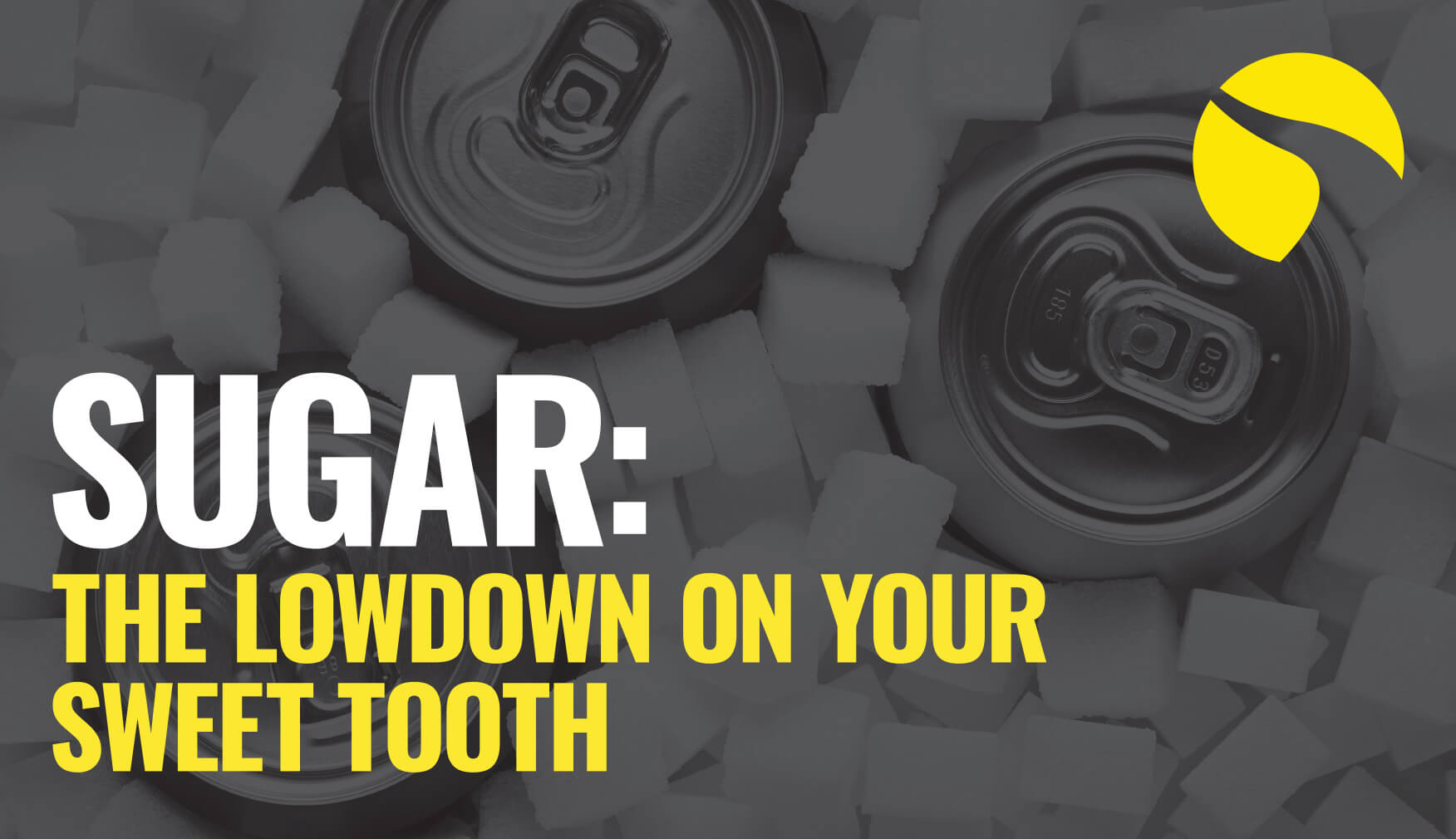Sugar: the lowdown

Sugar is everywhere in our modern diets, it’s in our drinks, in our foods and everywhere in between. One thing to make clear though is that fruit is not the enemy! Yes, fruit does contain sugar and yes, sugar can lead to weight gain, but cutting out an orange and an apple as a snack and replacing it with crisps and a diet coke isn’t the answer, or the point of this article.
With that said, let’s look into what sugar is, what it does and then how we can reduce it from our diets.
Different types of sugar
From sucrose, which is table sugar, to high-fructose corn syrup, which is liquid sugar, food producers have come up with a plethora of ways to list this nutrient on labels. This makes it even easier to skim over a long ingredient list whilst in a hurry and inadvertently take in more sugar than you meant to.
Disease links and “sugar belly”
Metabolic syndrome is an umbrella term for chronic issues like heart disease, diabetes and liver disease. High blood sugar is one of the five risk factors, according to research in the Journal of the American College of Cardiology. This is because it can affect organs like the pancreas and liver, leading to difficulty with blood-sugar regulation. One of the biggest signs of metabolic syndrome is the apple body shape known as "sugar belly."
Highly Addictive
Sugar can be addictive for a lot of people.
Eating sugar might lead to just wanting more of it down the line. Sugar can affect the brain much like cocaine and alcohol, according to a brain-scan study from the U.S. National Institute on Drug Abuse. Those changes, in turn, can lead to more cravings for sugar.
Tips to cut down
Reducing sugar in drinks
- Instead of sugary fizzy drinks or sugary squash, go for water instead. Get used to carrying around a bottle of water so you’re never left unprepared.
- Even unsweetened fruit juices and smoothies are still sugary, so limit the amount you have to no more than 150ml a day.
- If you take sugar in hot drinks, gradually reduce the amount by half a teaspoon until you can cut it out altogether.
Reducing sugar in food
- Check nutrition labels to help you pick the foods with less added sugar and look out for the different types mentioned earlier.
- Try reducing the sugar you use in your recipes.
- Select more single ingredient foods when shopping, that way you know that there’s definitely no added sugar.
- Enjoy a small handful of nuts a couple of hours after lunch to maintain your blood-sugar levels, doing this you’ll avoid the dreaded “afternoon slump” that tends to hit at about 2pm to 3pm.
As with most things, you can enjoy sugary treats, in moderation. Just don’t let the wool be pulled over your eyes. We’re bombarded with messages that shout “low-fat” or “gluten-free” but are then loaded with sugar. Now you know, you can keep your eyes peeled for all those pesky sugars. As ever, if you have any questions speak to one of the fitness team.
